Review: Modal Electronics Skulpt
Modal Electronics is known as the UK manufacturer of top-end synths, but its new Skulpt is sub-£300, lightweight and tiny. We get the ‘depeche’.
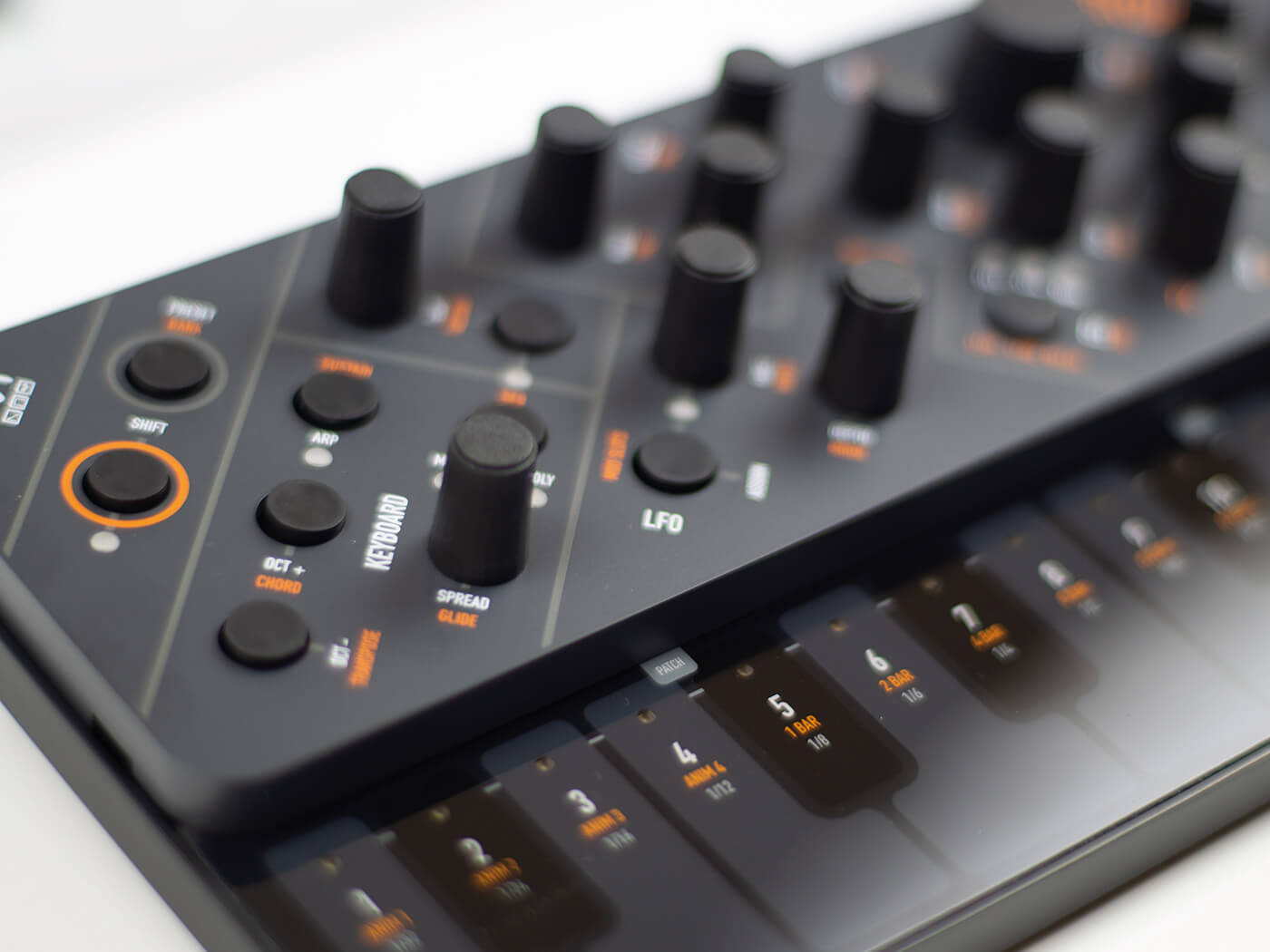
Image: Modal Electronics

Price £269
Contact Modal Electronics
Skulpt key features:
- 4-voice, 32-oscillator virtual analogue synthesiser with 16-key touch keyboard
- 8 oscillators/voice with 2 selectable, morphable waveforms
- 128 patches, 64 sequences
- Mixer: osc levels, FM, PWM, tuning and ring modulation
- Modes: Monophonic, Duophonic and Polyphonic
- Multi-option Unison/spread
- Modulation matrix: 8 slots, 8 sources, 37 destinations
- Filter, Amplitude and Modulation env. generators
- LFOs: 2x audio rate, one global and one polyphonic
- Delay and distortion effects
- Sequencer: 256 notes and up to 4 parameters
- MIDI x2, line and h/p jack out, clock sync I/O
- Power: USB, 6xAA batteries
- Dimensions (l x w x h, mm): 255 x 135 x 68
Modal Electronics is a UK-based company, which started producing hardware synths under the Modal name, a mere half-dozen years ago (from 2000, and to that point, it was known as Modulus Electronics).
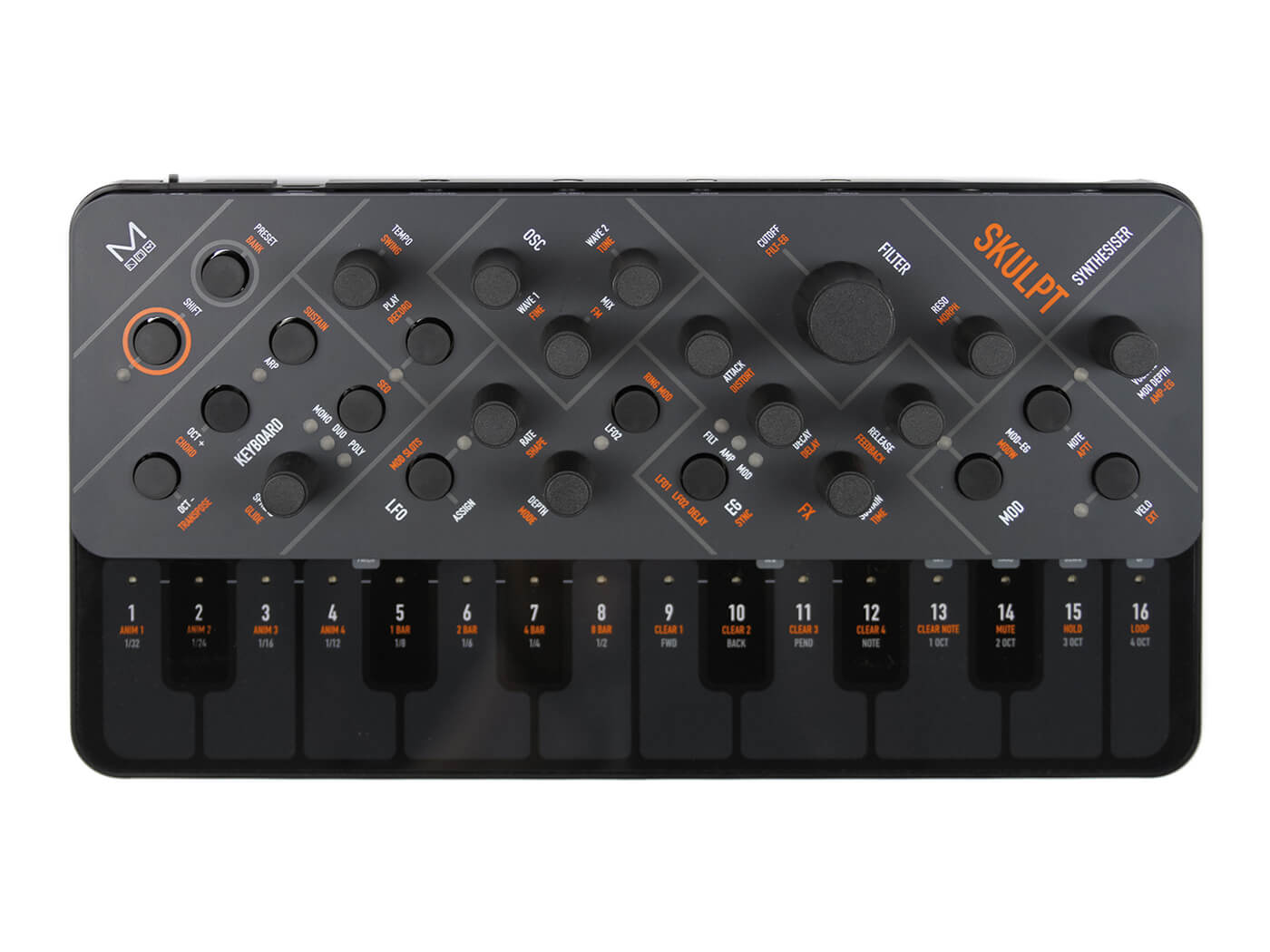
Since then, it has managed to release an entire range of its ‘00’ hybrid synths, classy affairs that range in price from £1,999 for the 001 duophonic to over four grand for the eight-voice 008. It was with some surprise, then, when we heard about the company’s latest Kickstarter project to release a sub-£300 synth that’d take some of the cooler attributes of its older and more expensive brethren and cram it into a small plastic box: the Skulpt.
Digital, light, big
While everyone seems to be going analogue crazy at the moment and releasing analogue synths at around this price range – stand up Arturia, IK and Korg, for starters – Modal has perhaps spotted a gap in the analogue revival: not analogue! Actually, we’re talking virtual analogue, really, as the synth’s structure is quite traditional in some ways, but there is no actual analogue circuitry to be found here.
The unit is very much aimed at your desktop with an angled front panel, lifted under and at the back by a battery case that houses six AA batteries, although, fortunately, it is also powered by micro USB. Other connections at the back include full-size MIDI In and Out, Sync In and Out – so you can easily incorporate it into a network of syncable machines as master or slave, and it is configured to the Korg and Teenage Engineering spec – and mini-jack line and headphone outs.
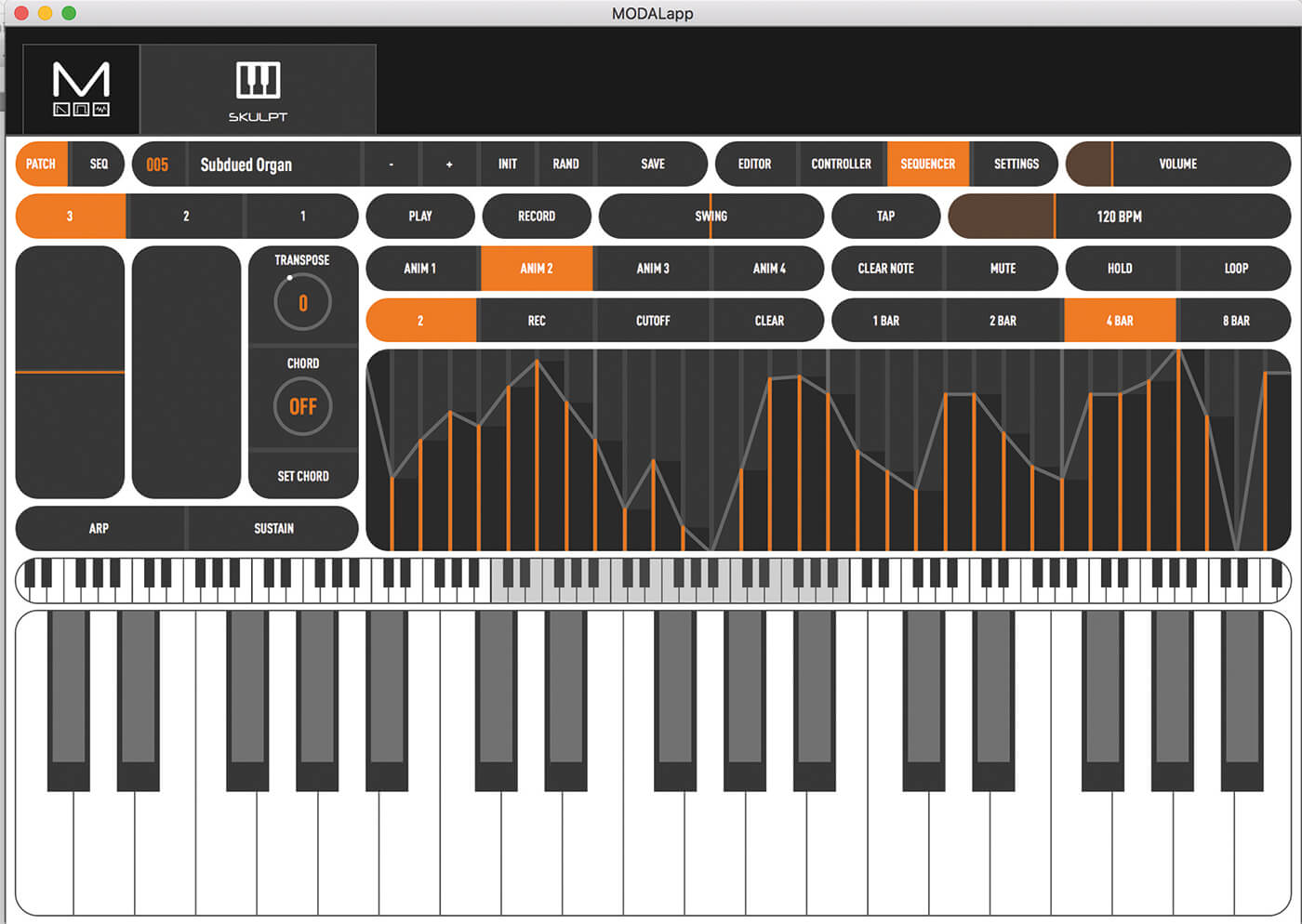
The synth structure takes you by surprise. I hinted that it’s traditional; what I mean is it’s easy to understand if you have analogue sensibilities, but has a big set of stats for a small machine. It has up to four voices of polyphony on Poly mode, each running eight identical oscillators simultaneously. Then in Duo mode, each voice runs 16 oscillators, and in Mono each has 32 oscillators – a potentially huge sound from a small box, especially as you can chain four together.
Let’s take a look at the box first, because it might initially disappoint and then surprise in equal measure. On first picking it up, I was blown away by how light it actually is (minus the batteries), to the point where you might think it incapable of producing any sonic grunt. Weight and sound don’t have a bearing on one another, but if you’re used to the heady, reassuring weight of an analogue device or your Eurorack modules, you might feel the same as me.
The front panel is compact but has good number of solid enough rotaries and buttons, with a Shift selector to reach more layers. There’s no screen, but a lot of what you will be doing will be by way of the Mac/Windows/iOS/Android app that spreads Skulpt’s innards out before you on your chosen device. While not essential, you’ll want to use it, especially at first.
In use
I say that, because I pretty much stumbled upon Skulpt’s ‘best use’ scenario from the off. Boot up the software and set it to Editor mode. Turn Skulpt on, dial up a preset (left hand buttons; hit Preset and choose a number from the 16 pad keys, or hit Shift and choose another bank), and then latch on the arpeggiator and play a chord.
Basically, what you do on Skulpt then comes alive on your computer screen – sweeping through two variable oscillator shapes, mixing them, tweaking filter and resonance, changing the shapes on mod, filter and amp envelopes, everything.
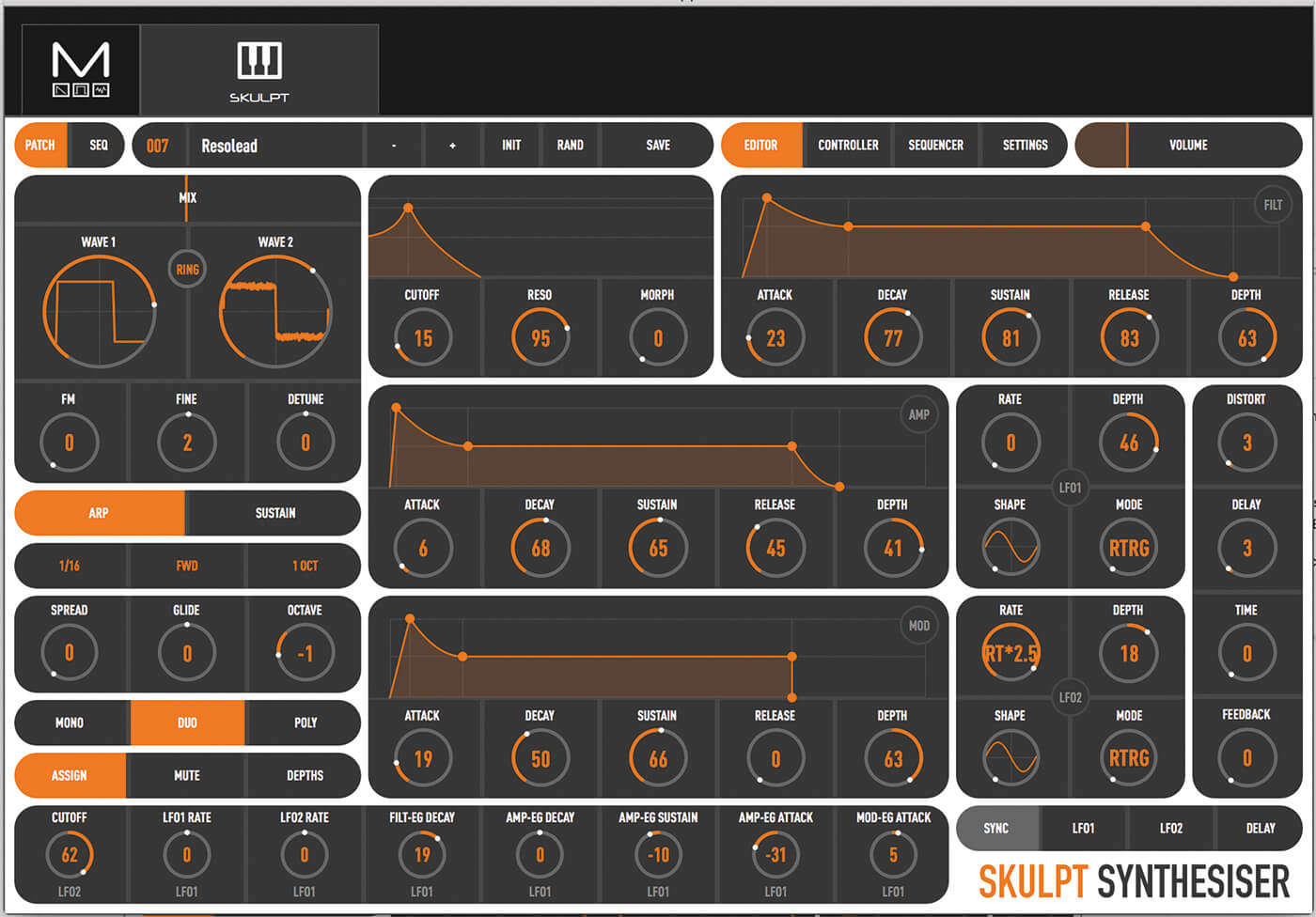
In this way, you’ll soon understand the Skulpt structure. Those Wave 1 and Wave 2 oscillators allow you to continuously sweep through waveforms, but Wave 1 can also act as an FM carrier to Wave 2’s modulator, with one can act as FM carrier. You can also introduce ring modulation via LFO2, where modulating Wave 1 affects the carrier Wave 2.
You get a 2-pole resonant filter that can morph from low, through band to high-pass. I’ve mentioned the envelopes and touched on the LFOs; these can affect the whole patch (LFO 1) or voices within it (LFO2). Simply press down the Assign key and then dial in the parameter you want to assign it to. You get a fulsome Modulation Matrix with eight slots, eight sources (including the LFOs, mod wheel, aftertouch, velocity) and 37 destinations. Assigning works beautifully in practice and, again, you can watch the results unfold on screen.
I’ve already been using the arpeggiator in my tests, but there’s also a very usable sequencer that lets you record in real time over up to eight bars and also four lanes of parameter automation, so you can easily record dial movements over time. Again, use this with the software as you get to edit those automations on screen. Very tidy.
I did have one or two glitches – presets not changing from the hardware, only the software – but updating the firmware seemed to resolve this. (Also, make sure you have exited whatever mode you are working in – LFO Assign, maybe – it helps!)
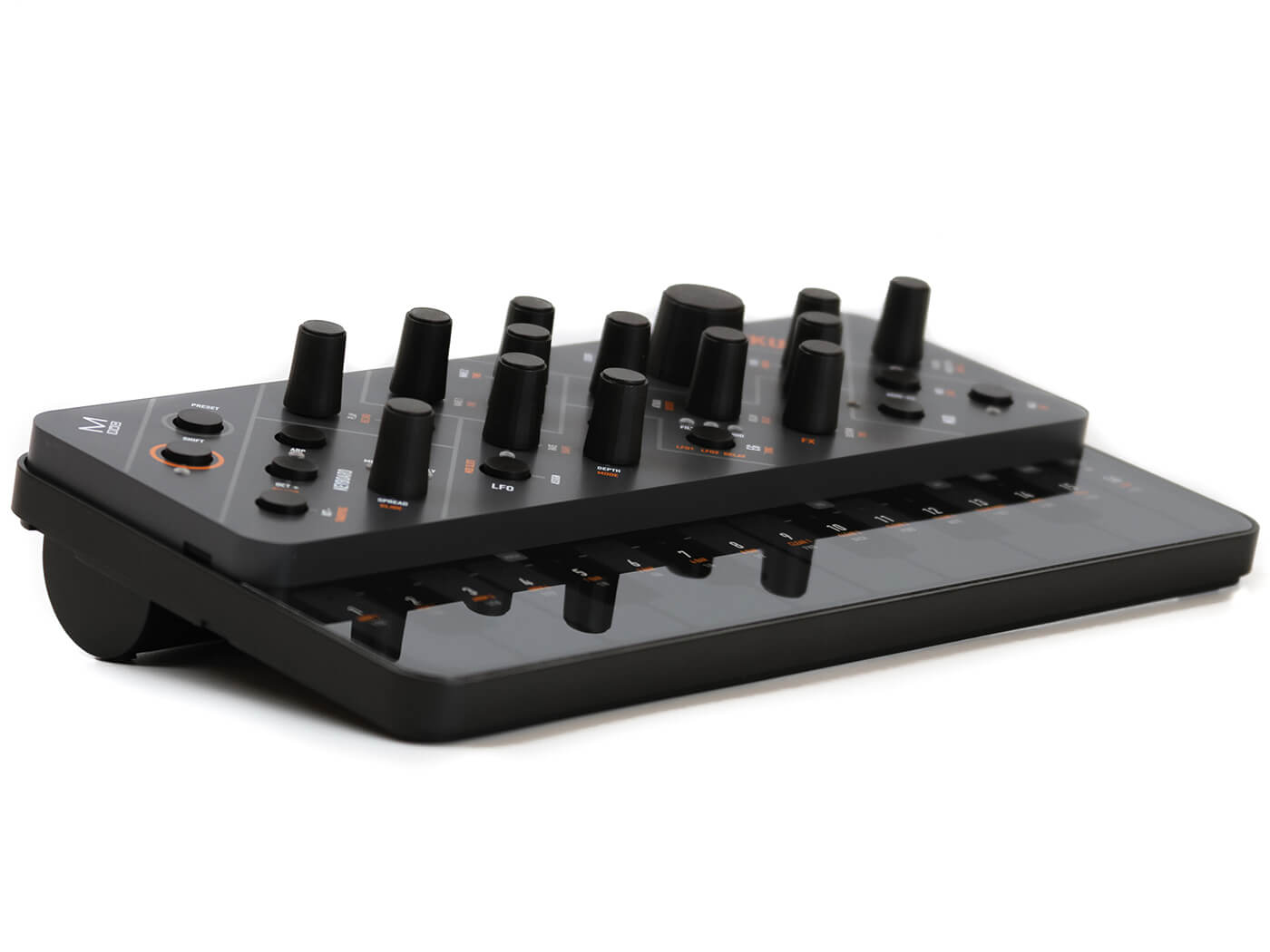
Finally, you get a couple of effects – distortion and delay – accessed via Shift under in the Envelope section. Not much, you might think, but very punchy and dramatic in practice. I had a great time assigning LFO1 to the distortion.
Just time to mention the sounds – although such is Skulpt’s nature, you will be creating your own, or editing the supplied presets in no time. They are pretty varied, to be fair, with everything from percussion to dreamy pads, with a fair amount of randomness on occasion.
They might err a bit too much towards ambient and synth wave for some, but I bloody love that, so I am slighty biased in their favour. Audition one if you have any doubts but again, creating your own patches is almost a must – it’s so easy to make your own mark, and taking it further with automation and LFO assignment is so easy, it’s almost criminal not to. The presets are great, but the tweakage is even greater…
Conclusion
I thoroughly enjoyed my time with Skulpt. There are caveats. You’ll want to use an external keyboard when it’s set up in your studio, and you’ll want to witness the joys of the software alongside it – not a problem if you have a Mac, PC or any mobile device.
So, in that sense, in order to fully appreciate it, you might just prefer to use Skulpt with the app. That said, you can easily throw it in your backpack and doodle away with it on a train – it’s great fun and inspirational on the move.
The market for cheap synths is truly at boiling point and, while they get even cheaper, I’d say that this is one of the best-sounding and most inspiring. Modal Electronics is based around 10 miles away from where I’m writing this review… I could return it by hand. Or I might not.
Do I really need this?
We live in giddy times for hardware synths. For less than a grand you could surround yourself with several decent hardware units that all vary in purpose, architecture and sound. You would have needed vast amounts of cash to buy the equivalent power, even just five or six years ago, so make the most of it – it might all end tomorrow! And of all the cheaper synths around, I have to say that Skulpt is one of my favourites, with a rich texture to it you’ll not find elsewhere.
Alternatives
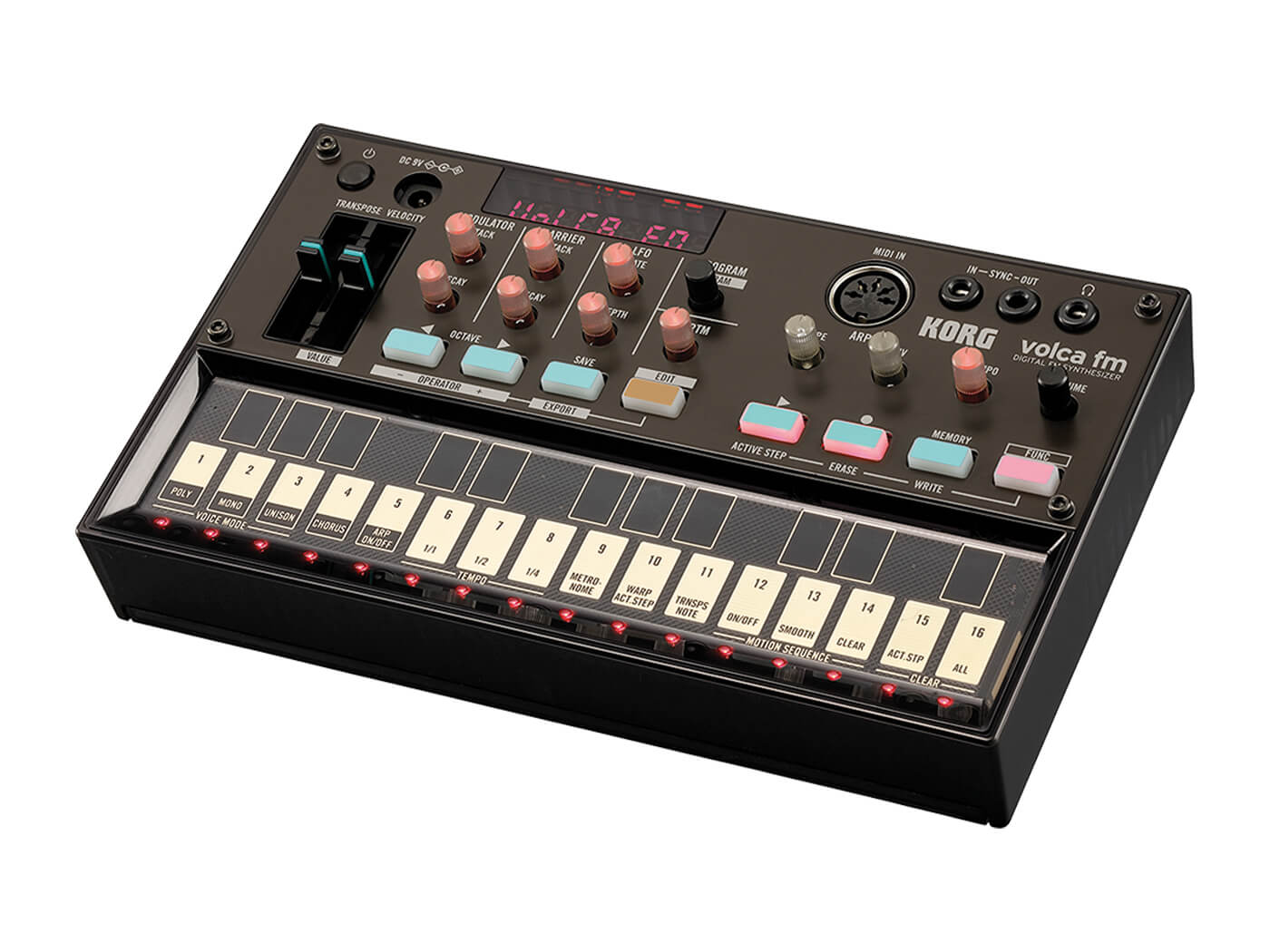
Korg
Volca range from £120
Small, light, battery operated, portable and even cheaper, so you have to throw the Volcas in here as alternatives, although there isn’t one that competes directly in terms of sound and architecture.
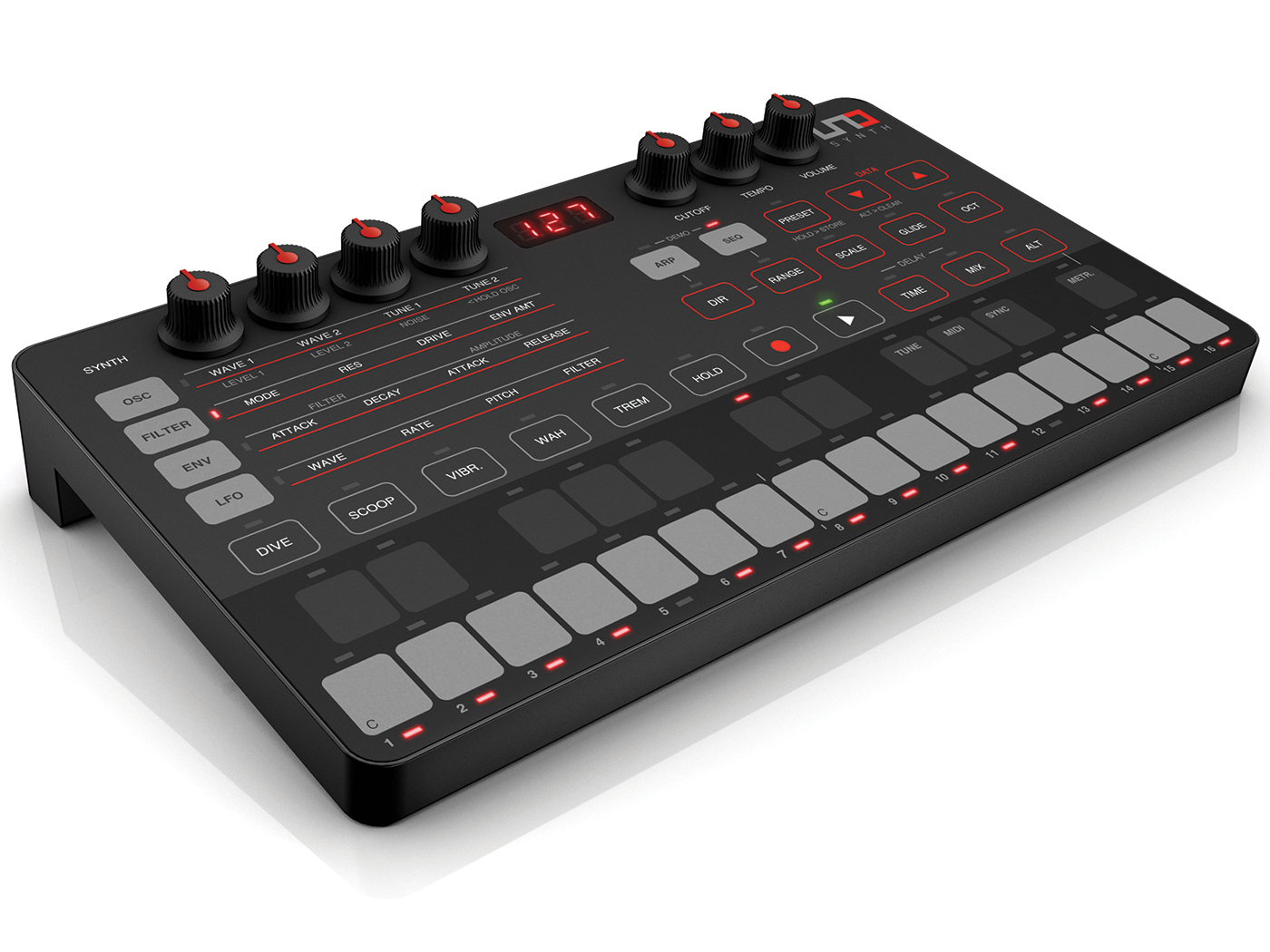
IK Multimedia
Uno Synth £179 street
Again, it doesn’t have the same sound – we’re talking pure analogue here, instead – but Uno Synth is another of the new breed of cheap, plastic-but-fantastic hardware synths sweeping the market. I reviewed and loved it.